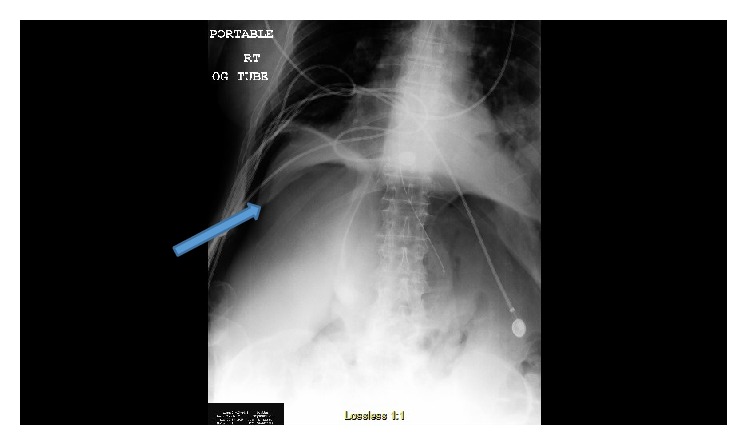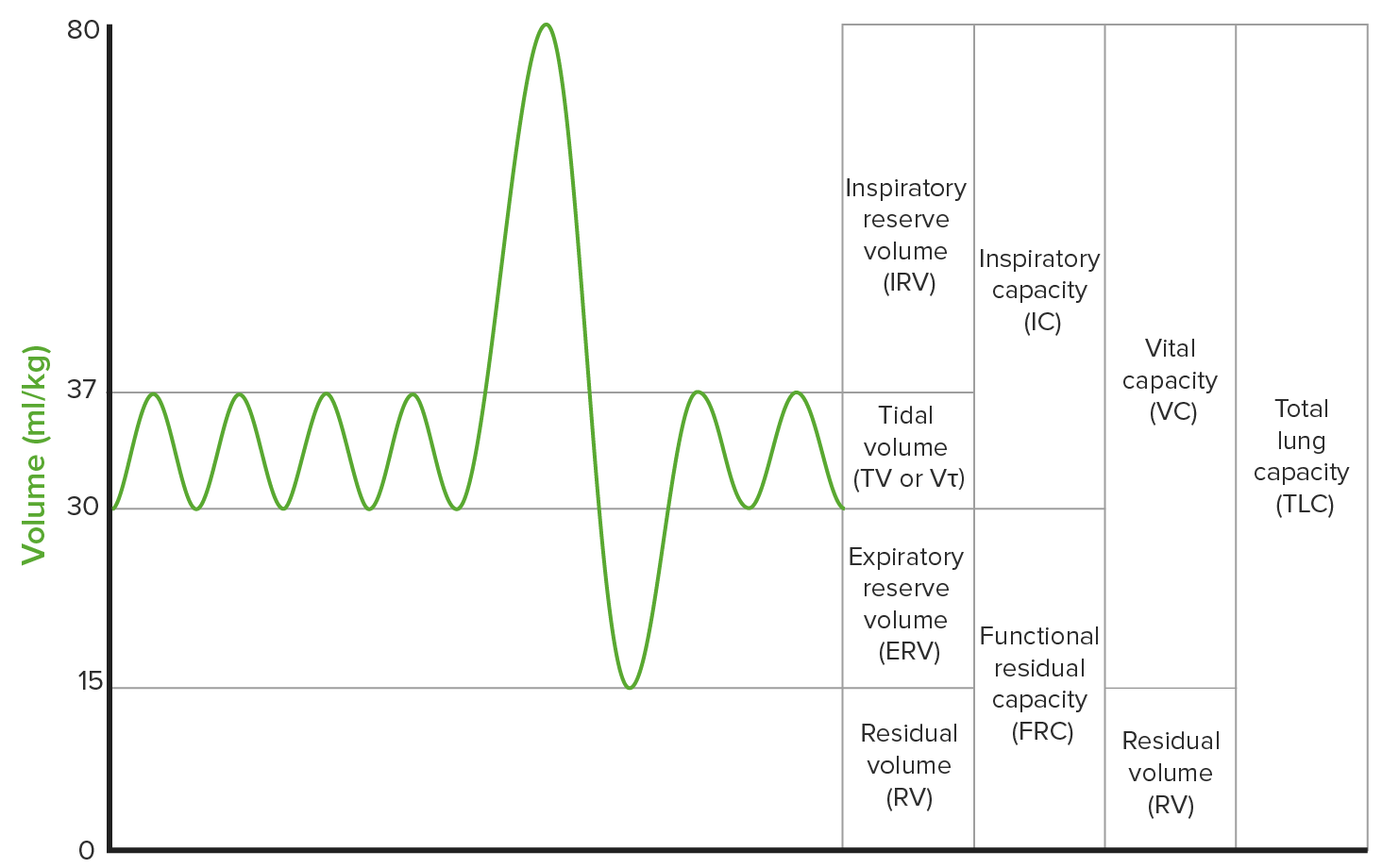Playlist
Show Playlist
Hide Playlist
Chronic Bronchitis: Differential Diagnosis
-
Slides ObstructiveLungDisease ChronicBronchitis RespiratoryPathology.pdf
-
Reference List Pathology.pdf
-
Download Lecture Overview
00:01 Okay. Let’s talk about differential diagnosis, shall we? Chronic Obstructive Asthma. So, atopic asthma. So, what we’ll do here and as you proceed into subsequent topics of asthma and so forth, you want to keep in mind that those three circles that I’ve showed with the overview of asthma, chronic bronchitis and emphysema. Often times, you’ll have an overlap. So, chronic obstructive asthma. Atopic asthma, what does that mean to you? It’s extrinsic asthma. And what does that mean to you? That means this individual got exposed to something in the outside world. Let it be through occupation, maybe through habits, maybe through in the park, whatever it may be. You’ve heard of pollen, you’ve heard of industrial exposure, maybe in inner cities, there might be cockroaches and so forth. Atopic asthma since childhood plus heavy smokers in their 20s and 30s could present with a combination of COPD plus asthma. Usually, this would be chronic bronchitis plus asthma. What do you need to do? What needs to be distinguished for the purpose of clinical management? So, chronic bronchitis, you are absolutely relying upon the definition. You find this definition even in a patient that has asthma and they’re smoking. Please understand that you’ve given yourself chronic bronchitis a type of COPD. 3 months, 3 and 2. 01:20 3 months of productive cough over 2 successive years and normal pulmonary function test not considered COPD. Fantastic! Isn’t that crazy? So, which you must find is that definition, but what’s a pulmonary function test? How important is that? Very. What is this? FEV1 over FVC. And so therefore, if you find this to be normal, at this juncture, by definition, your current day practice, you cannot call this COPD. You must find that ratio being normal, or excuse me, you must find that ratio being decreased. If you find it normal, then you cannot medically and clinically consider it to be COPD. Keep that in mind. I’m giving you more information based on the foundation that we are setting up. 02:10 Continuing our discussion of COPD differential diagnosis. Now, we’ll take a look at central airway obstruction and upper airway obstruction. CAO, UAO respectively. What are these structures? Tracheal, how many do you have? Please say one. Okay. You have one trachea. 02:29 Therefore, you call this central airway type of obstruction. And we have vocal cord, this would be considered upper airway obstruction. Know them both. The last time we talked about vocal cord obstruction was dealing with the healthcare workers. And so therefore, you have vocal cord type of obstruction taking place. 02:47 Now, this is where it gets a little tricky, but stick with me, you’ll be fine. Do not typically respond to bronchodilators, because where are you? The trachea and the vocal cord. 02:57 Now, if it was the bronchi, the bronchiole, we have smooth muscle and therefore, by giving a beta-2 agonist, there’s every possibility that you might be improving such obstruction. 03:08 However, here, you’re paying attention to some of that flow volume spirometries that we’ve been looking at. 03:14 Now, let’s walk through this one more time. Let’s talk about fixed obstruction and we’ll talk about what’s known as your.. well, you tell me. Is this a vocal cord or your trachea? Would you then call this an extrathoracic or intrathoracic type of pathology? Good. 03:32 Extrathoracic. Okay, great. Now, what does that mean? Let’s walk through these. 03:38 Say that you’re having obstruction in the upper airway, okay? Maybe it’s a tumour, head and neck tumour. Maybe it’s, you know, something like your central airway obstruction with trachea. First off, think about the trachea and how big the diameter of that tube is. 03:51 It’s big. And so therefore, first, let me walk you through this. That means in order for you to find any changes in your flow volume type of spirometry, you became that tiny before you start seeing changes on your flow volume loop. That’s a little too late, isn’t it? I’ve been meaning to say, your disease process was taking place for a long period of time before you found the changes on your flow volume loop. Is that clear? So, but, just to make sure that we’re okay, if you get a clinical vignette and you find the following fixed obstruction, what does that mean? Close your eyes, think about a flow volume loop. What’s the top half known as? That is all exhalation. What is the bottom half? That is all inspiration, isn’t it? Now, normally speaking, you should have expiration or exhalation peak flow and down you go. But what happens in fixed? You can’t rise too high. Why? Because there’s a upper airway type of obstruction. In addition, not only can you not get air out properly, what about inspiration? Inspiration, you should be inspiring until you get to total lung capacity, but even that has been curtailed. So that fixed obstruction to you should indicate, there’s an issue in the upper airways. 05:14 Now, we will go one step further as well. Because this is an extrathoracic issue, you’re going to have more problems with inspiration. If you have not followed me, I need you to go back if you’re not clear about this. Go back to the review of where we discussed in great detail, our pulmonary function test and we walked through each one of these. Now at this point, I assume that you know them and you’re quite familiar. 05:39 Because this is extrathoracic, with upper airway obstruction, it may also present not so much with the problem with exhalation, but more so with the problem with inspiration. 05:50 That will be shortened or curtailed. Keep those two in mind when you’re dealing with central airway obstruction or upper airway obstruction. 05:59 Now, as I was saying earlier, if you find changes in your flow spirometry or volume loop, then please understand, you’re pretty late in your pathology. Okay, so,therefore, it is going to be extremely specific, but you know, in terms of when you see it, you could be late in your disease. Just keep that in mind and that’s pretty big. 06:19 Let’s continue. Other differential diagnosis for COPD include pneumonia, bacterial pneumonia. 06:25 We’ll have focal infiltrate on imaging, more likely to have a fever, higher, positive sputum culture. So this would be pretty straightforward in terms of you being able to diagnose your pneumonia, but then it may mimic COPD type of patients, meaning to say dyspnea and so forth. 06:43 Now, here’s a quick little review of everything we've looked at that. Here’s your fixed obstruction. 06:48 Take a look at exhalation on top, inspiration on the bottom. You’re moving clockwise. 06:53 Clear? Clockwise. Both exhalation and inspiration have been compromised. Quickly, extrathoracic. 07:02 This is going to be two major issues. This one and I want you to take a look at intrathoracic. Is it once again, reviewed? With extrathoracic, you’re referring to your vocal cord, you’re looking at a mass in the upper airway. What is the bottom half? Good. Inspiration. That has been compromised.
About the Lecture
The lecture Chronic Bronchitis: Differential Diagnosis by Carlo Raj, MD is from the course Obstructive Lung Disease: Basic Principles with Carlo Raj.
Included Quiz Questions
Which of the following statements about chronic bronchitis is CORRECT?
- At least 3 months of productive cough per year, for 2 consecutive years
- 3 months of productive cough over a successive 3-year span is characteristic of chronic bronchitis
- A nonproductive cough is characteristic of chronic bronchitis
- 1 month of productive cough over a successive 2-year span is characteristic of chronic bronchitis
- There is no mucous production in chronic bronchitis.
Which of the following statements about spirometry findings of fixed upper airway obstruction is CORRECT?
- Fixed upper airway obstructions demonstrate plateaus of flow during both inspiration and expiration
- Fixed upper airway obstructions demonstrate reduction of inspired flows during forced inspirations
- Fixed upper airway obstructions demonstrate reduction of airflow during forced expiration
- Fixed upper airway obstruction preserves airflow during expiration
- Fixed upper airway obstruction preserves airflow during inspiration
Which of the following statements about spirometry findings of variable extrathoracic obstructions is CORRECT?
- Variable extrathoracic obstructions demonstrate reduction of inspired flows during forced inspirations
- Variable extrathoracic obstructions demonstrate reduction of airflow during forced expirations
- Variable extrathoracic obstructions preserve airflow during inspiration
- Variable extrathoracic obstructions preserve airflow during both forced expiration and forced inspiration
- Variable extrathoracic obstructions demonstrate plateaus during both forced expiration and forced inspiration
Customer reviews
5,0 of 5 stars
| 5 Stars |
|
5 |
| 4 Stars |
|
0 |
| 3 Stars |
|
0 |
| 2 Stars |
|
0 |
| 1 Star |
|
0 |





